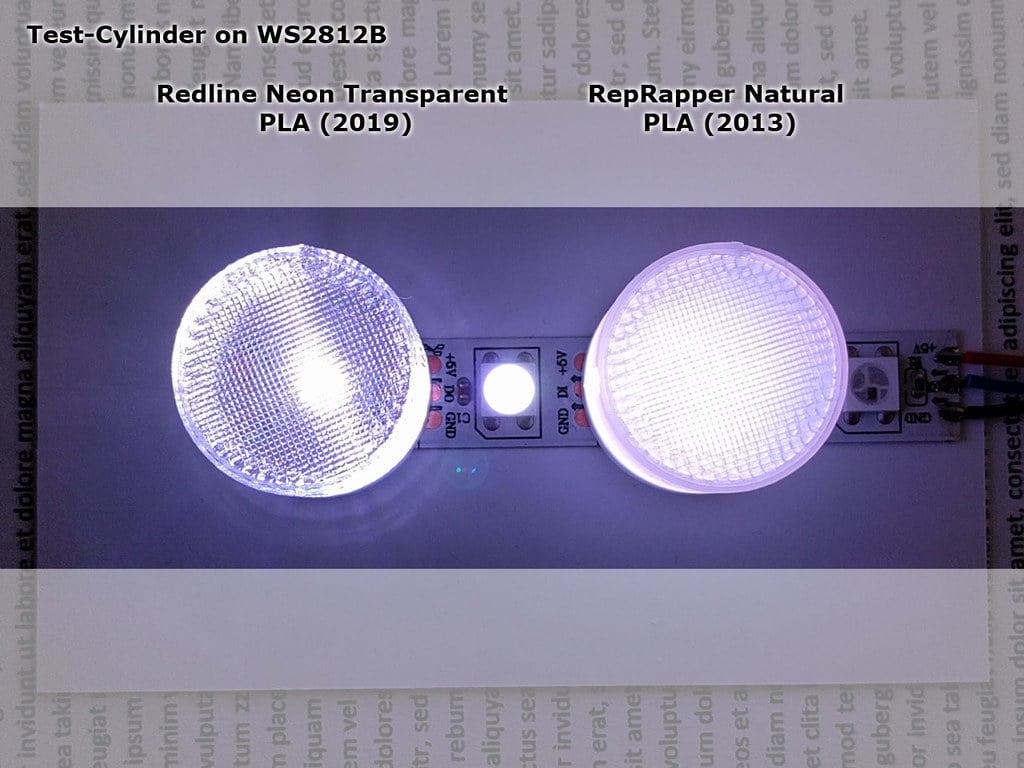
Diffusive Filament Test
thingiverse
# What's Going On? I've created these prints to test how well different filaments diffuse light. If you're looking for filament suitable for printing LED diffusers, this project is designed to help you find the best option. Your Input Is Crucial! This project relies heavily on your contributions. Please add new designs using various filaments to help us compare their performance. # Pay Attention to Print Settings The print settings are crucial in achieving the desired results. Make sure to adjust them accordingly. # Why This Project Matters I have a filament that excels at diffusing light, but it's no longer available. I've searched for alternatives, but most of them fail to diffuse light properly. That's why I need your help - and if you're printing 3D objects that require light diffusion, this project can benefit you too. # How It Works I've designed three simple prints to demonstrate how different filaments perform in diffusing light. The two ramps showcase the effect of distance and thickness on light diffusion. One ramp is printed flat with infill, while the other is printed standing with perimeters. The flat ramp features four ramps with varying thicknesses: 0.2mm, 0.4mm, 0.6mm, and 0.8mm. The standing ramp is 1mm thick, consisting of two perimeters. The cylinder is designed to be placed upside down on a standard 5050 RGB LED (e.g., WS2812B / SK6812 / NeoPixel). # Results ## Ramps As you can see in the picture with the ramps, the left filament partially blocks light but doesn't diffuse it. The text becomes harder to read on thicker ramps. The right filament, however, blocks less light but also diffuses it. The text is darker at the bottom edge, and it becomes harder to read along the ramp towards the top edge. ## Cylinder It's challenging to capture the effect on a cheap smartphone camera, but you can still notice the difference. The filament on the left mostly refracts the light, resulting in sharp glare light bars visible through the side and a clear outline of the LED through the top. The refraction also causes the light to split apart, making it easy to see distinct red and green spots - it's not white at all. On the right, the same amount of light is passed, but it's not refracted. The visible outline of the LED is less sharp, and the light is almost perfectly white (hard to see in the picture). # Filaments ## Good Ones: * RepRapper Natural PLA (bought 2014 on amazon.de via KaufKlub, no longer available) (right one in the picture) ## Not That Bad: * Kexcelled PETGk5-diffuse: light diffuse PETG (bought 2020 on ruhr3d.shop) (pretty clear) * GOEDIS Transparent PLA (bought 2019 on amazon.de) (clear) ## Bad Ones: * RepRapper Natural PLA (bought 2019 on reprappertech.com) (left one in the picture) * DasFilament Natur F10108 PLA (bought 2018 on dasfilament.de) (crystal clear) * DasFilament Weiß F10101 PLA (bought 2018 on dasfilament.de) (too opaque) ## Not Yet Tested: * AMOLEN PETG Light Transmission Filament (amazon)
With this file you will be able to print Diffusive Filament Test with your 3D printer. Click on the button and save the file on your computer to work, edit or customize your design. You can also find more 3D designs for printers on Diffusive Filament Test.
